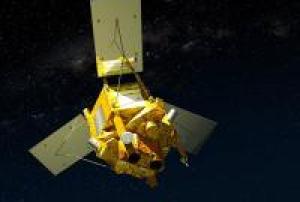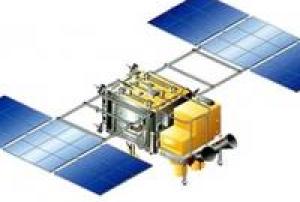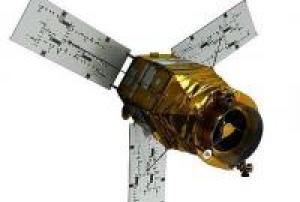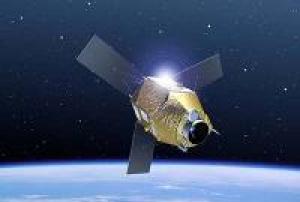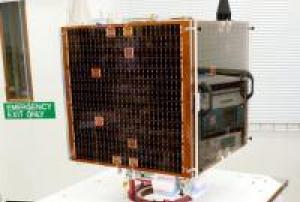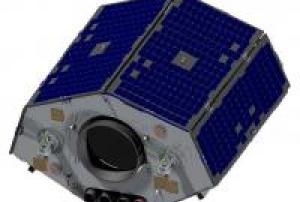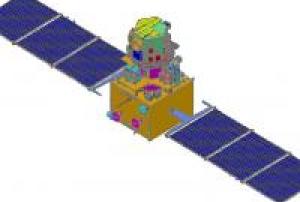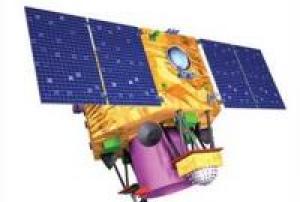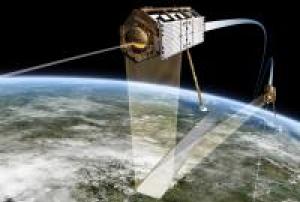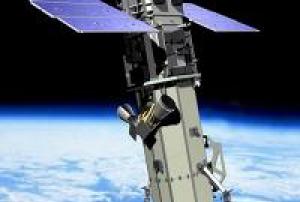Earthquake
Definition
Facts and figures
Further information
UN-SPIDER Regional Support Offices with hazard-specific expertise
Related content on the Knowledge Portal
SPOT-6 (Système Pour l’Observation de la Terre) is an optical satellite built by Astrium and was successfully launched on September 9, 2012 with SPOT 7 launched on June 30, 2014.
read more
The new generation SPOT-6 and 7 optical satellites feature technological improvements and advanced system performance allowing continuity in the SPOT constellation through to 2024. It is capable of imaging the Earth with a resolution of 1.5 meter panchromatic and 6 meter multispectral (blue, green, red, near-IR) and will offer imaging products to customers in defense, agriculture, deforestation, environmental monitoring, coastal surveillance, engineering, oil, gas and mining industries.
The ability to respond accordingly to changing weather conditions, a reduced timeline for urgent tasking requests and an acquisition capacity of 3 million sq km per satellite shows an increased data capacity and simplified data access, major improvements in this generation of SPOT satellites.
SPOT-6 and…09/09/2012Kanopus-V (also spelling of Canopus-V N1) is an Earth observation minisatellite mission of the Russian Space Agency, Roskosmos and ROSHYDROMET/Planeta. The overall objective is to monitor Earth's surface, the atmosphere, ionosphere, and magnetosphere to detect and study the probability of strong earthquake occurrence.
Essentially, it would be an imaging satellite designed to photograph the Earth surface with a resolution of 2.1 meters and a swath of 20 kilometers with its panchromatic camera and a resolution of 10.5 meters and a swath of 41 kilometers with a multispectral camera. Resulting images could be used for cartography, agricultural planning and similar applications.The Kanopus-V-N1 spacecraft was launched on July 22, 2012 on a Soyuz FG/Fregat vehicle from the Baikonur Cosmodrome, Kazakhstan. The launch provider was Starsem.
Instruments:
read more
PSS (Panchromatic Imaging System)
MSS (Multispectral Imaging System)
MSU-200 (…22/07/2012KOMPSAT-3 is an optical high-resolution Korean observation mission of KARI (Korea Aerospace Research Institute). The mission is funded by MEST (Ministry of Education, Science and Technology). The project was started in 2004. The objective is to provide observation continuity from the KOMPSAT-1 and KOMPSAT-2 missions to meet the nation's needs for high-resolution optical imagery required for GIS (Geographical Information Systems) and other environmental, agricultural and oceanographic monitoring applications.
A further goal is to meet the nation's satellite demand and form a technology infrastructure that will make inroads into the world space industry at a stage when the industry is improving the capability to design and develop highly advanced remote sensing satellites.
Instrument: AEISS (Advanced Electronic Image Scanning System)
read more
- 5 spectral…18/05/2012Launched in December 2011, Pleiades is a constellation of two very-high-resolution satellites capable of acquiring imagery of any point on the globe in under 24 hours for civil and military users.
read more
Pleiades has been observing and mapping Earth’s surface at a resolution of just 70 cm every day since December 2011. Comprising the Pleiades 1A and Pleiades 1B satellites, this space imaging system complements the capabilities of the SPOT satellites, which have a wider field of view than Pleiades but lower spatial resolution. What’s more, as Pleiades 1A and 1B are in the same orbit, together they can image anywhere on Earth in less than 24 hours. Pleiades imagery is used for both civil and military applications, for example to track urban expansion, monitor the planet’s active volcanoes or assist road and railway routing, and to locate adversaries’ military installations for mission planning. Pleiades’ key asset is an extremely sensitive optical…17/12/2011NASRDA (National Space Research & Development Agency) of Abuja, Nigeria has continued its association with SSTL, with two parallel projects - the NX and NigeriaSat-2. Like NigeriaSat-1, NX is based on the SSTL-100, but is being developed by a team of 26 Nigerian trainee engineers at SSTL's facilities in England. The Nigerian engineers will completely manage the total lifecycle of the NX and will be responsible for the delivery of the satellite to full flight specification.
read more
Capacity building is central to the implementation of the Nigeria Space Program. As part of the Know-How Technology Training (KHTT) on the NigeriaSat-2 satellite project is the development of a training model (TM) named NigeriaSat-X. The TM will be used to give the KHTT’s hands on experience in the requirements specification, project management, system engineering, manufacture, test, assembly / integration and final system testing of a spacecraft. Unlike the…17/08/2011In November 2006, NASRDA (National Space Research and Development Agency) of Abuja, Nigeria awarded a contract to SSTL (Surrey Satellite Technology Ltd.) of Guildford, UK, to develop and build NigeriaSat-2, including the related ground infrastructure and image processing facilities, together with an extensive training program to further develop an indigenous space capability in the Federal Republic of Nigeria. NASRDA is an agency under the Federal Ministry of Science and Technology of Nigeria established in 1999.
read more
The objective of the NigeriaSat-2 mission is to provide high-resolution (Pan and MS) imagery in a swath width of 20 km. In addition, the spacecraft also carries a DMC continuity payload to provide observation continuity with NigeriaSat-1, launched in September 2003. - The imagery of both spacecraft will serve as a catalyst to the development of Nigeria's NGDI (National Geospatial Data Infrastructure) program. NASRDA will facilitate efficient production, management…17/08/2011ResourceSat-2 is a data continuity mission of ISRO (Indian Space Research Organization) with improved spectral bands of the IRS-P6/ResourceSat-1. Each ResourceSat satellite carries three electrooptical cameras as its payload: LISS-3, LISS-4 and AWiFS. All the three imagers are multispectral pushbroom scanners with linear array CCDs as detectors.
ResourceSat-2 provides continuity and increases the observation timeliness (repetivity) in tandem with ResourceSat-1.
Additionally, the satellite carries an AIS payload for exactEarth (COMDEV), which is known as exactView 2 (EV 2).
Resourcesat-2 was launched in April 2011.Instruments:
read more
AWiFS (Advanced Wide-Field Sensor)
LISS-III (Linear Imaging Self-Scanning Sensor)
S-AIS (Satellite-based Self-Scanning Sensor)
LISS-IV Camera20/04/2011Cartosat-2 is an advanced remote sensing satellite with a single panchromatic camera (PAN) capable of providing scene-specific spot imageries for cartographic applications. The camera is designed to provide imageries with better than one meter spatial resolution and a swath of 10 km. The satellite will have high agility with capability to steer along and across the track up to + 45 degrees. It will be placed in a sun-synchronous polar orbit at an altitude of 630 km. It will have a revisit period of four days. The re-visit can be improved to one day with suitable orbit manoeuvres.
Several new technologies like two mirror on axis single camera, Carbon Fabric Reinforced Plastic based electro optic structure, lightweight, large size mirrors, JPEG like data compression, advanced solid state recorder, high-torque reaction wheels and high performance star sensors are being employed in Cartosat-2.
Instrument: PAN (…
read more12/07/2010The TanDEM-X mission will survey all 150 million square kilometres of Earth's land surface several times over during its three-year mission. Apart from its high measuring-point density (a 12-metre grid) and high vertical accuracy (better than two metres), the elevation model generated by TanDEM-X will have another unrivalled advantage – being entirely homogenous, it will serve as a basis for maps that are globally consistent. Conventional maps are often fragmented along national borders, or difficult to reconcile as they are based on different survey methods or because of time lags between survey campaigns. Together TanDEM-X and TerraSAR-X are form the first configurable synthetic aperture radar interferometer in space. Besides this primary goal, the mission has several secondary objectives based on new and innovative methods such as along-track interferometry, polarimetric synthetic aperture radar interferometry, digital beamforming and bistatic radar. The TanDEM-X…
read more21/06/2010WorldView-2 (WV2) is a commercial imaging satellite of DigitalGlobe Inc. of Longmont, CO, USA (follow-on spacecraft to WorldView-1). The overall objective is to meet the growing commercial demand for high-resolution satellite imagery (0.46 cm Pan, 1.8 m MS at nadir - representing one of the highest available spaceborne resolutions on the market).
In the fall of 2003, DigitalGlobe had received a contract from NGA (National Geospatial-Intelligence Agency) of Washington DC to provide high-resolution imagery from the next-generation commercial imaging satellites. The contract award was made within NGA's NextView program. The NGA requirements called for imagery with a spatial resolution of 0.5 m panchromatic and 2 m MS (Multispectral) data.
The WorldView-2 sensor provides a high resolution panchromatic band and eight (8) multispectral bands; four (4) standard colors (red, green, blue, and near-infrared 1) and four (4) new bands (coastal,…
read more08/10/2009

